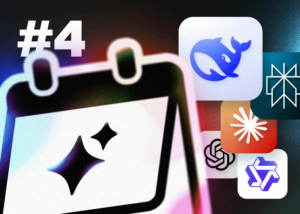OpenAI Evaluates Watermarking for Images Generated by ChatGPT

OpenAI’s New Watermarking Technology for Images
OpenAI has introduced a new approach to ensure the authenticity of images created by its ChatGPT technology. This innovative solution involves watermarking, which enables the identification of AI-generated images, potentially preventing misuse and misinformation in various sectors.
What is Watermarking?
Watermarking is a technique used to embed information into a digital image. This hidden information can reveal details such as the creator of the image and can confirm whether the image was generated by an AI model. Watermarking serves as a protective measure, helping to maintain the integrity of digital content.
Benefits of Watermarking AI-Generated Images
- Combatting Misinformation: With the spread of AI-generated content, concerns about false information have risen. Watermarking helps to track the source of images, thus enhancing trust in visual media.
- Attribution: Watermarks allow creators to receive credit for their work, which is crucial for artists and photographers. This can help promote transparency within the digital landscape.
- Usage Monitoring: Watermarking can also assist in monitoring how and where the images are being used, providing valuable data about the reach and impact of AI-generated visuals.
How OpenAI’s Watermarking Works
OpenAI’s watermarking technology works by embedding digital signals within images produced by the ChatGPT model. These signals are made to be imperceptible to the human eye but can be read by computer algorithms. This process ensures that even if an image is shared widely, its origin can be tracked back to the AI model that created it.
Image Generation Accessibility
Recently, OpenAI announced that its image generation capabilities are now available for free. Users can create images using the technology without any financial commitment. This accessibility opens up opportunities for various applications, such as:
- Personal Projects: Individuals can generate custom images for personal use, enhancing creativity and expression.
- Educational Purposes: Students and educators can utilize AI-generated visuals for assignments, presentations, or learning materials.
- Marketing and Branding: Businesses can create unique imagery for marketing initiatives, fostering innovative brand representation.
Safety Measures Against Misuse
Given the potential for misuse of AI-generated content, OpenAI has laid out several strategies to address concerns:
- Education on Responsible Use: OpenAI emphasizes the importance of educating users on ethical practices when using AI-generated images. This awareness can lead to more informed decision-making and reduce misuse.
- Community Guidelines: Establishing clear community guidelines ensures that users understand the limitations and responsibilities that accompany the use of AI technologies.
- Monitoring and Reporting Tools: OpenAI plans to employ tools that allow users to report any misuse, creating a framework for accountability.
Alternatives to OpenAI’s Technology
While OpenAI is at the forefront of AI image generation, several other platforms offer similar services. These alternatives provide unique features, including:
- DALL-E: Another product from OpenAI that specializes in generating imaginative images based on textual descriptions.
- DeepAI: An AI platform that provides various tools for generating images, along with options for style transfer and artistic effects.
- Craiyon: A straightforward and user-friendly tool for creating images based on simple prompts.
Considerations for Users
As AI technology continues to evolve, users should think carefully about their responsibilities when utilizing these tools. Here are some important factors to keep in mind:
- Credit Creators: Always attribute any AI-generated content to its source, respecting the intellectual property of the developers and creators.
- Disclose AI Usage: When sharing AI-generated images, it is advisable to disclose that the content was created using an AI model to maintain transparency.
- Stay Informed: Keeping up-to-date with policies and guidelines from AI firms like OpenAI can help users navigate the landscape of AI-generated content wisely.
By understanding the implications of AI image generation and watermarking, individuals and organizations can harness the benefits of this technology while acting responsibly.






